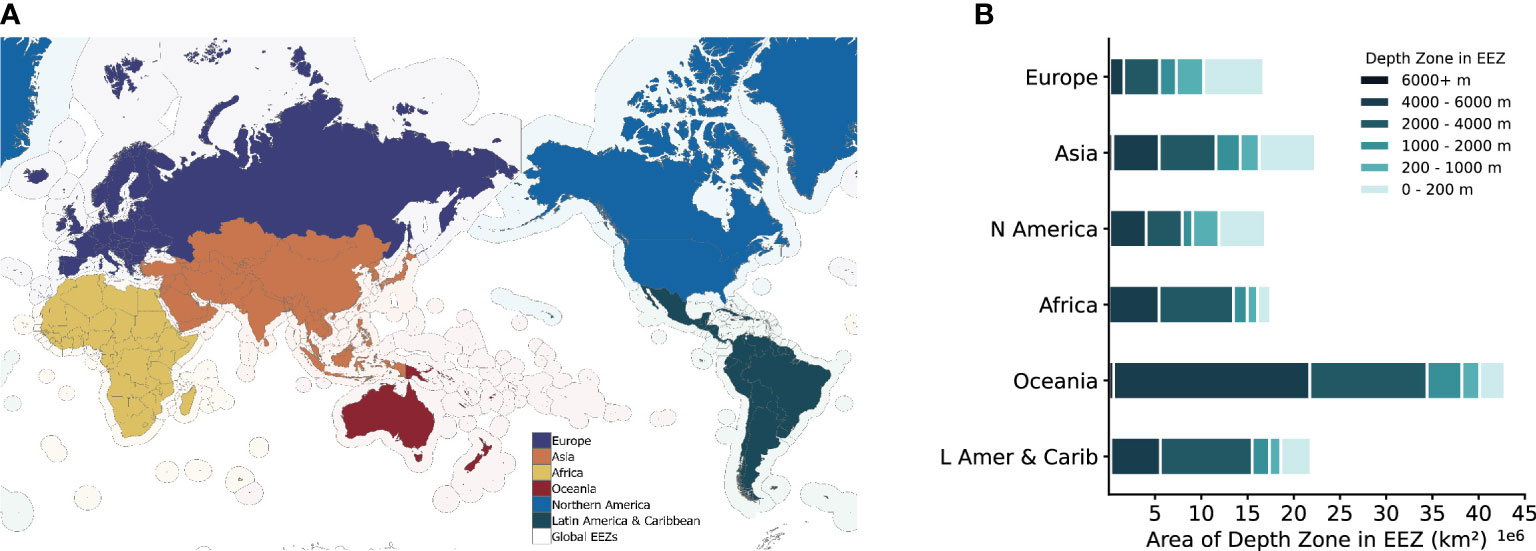It shouldn’t surprise anyone that deep ocean exploration is an expensive endeavor. Vessels, instrumentation, deep-submergence vehicles, and analytical tools are costly to run and the specialized training needed to maintain that equipment is often a career in itself. Deep-sea research cruises are among the most logistically complex peacetime operations in human history. When access to resources are limited to only the wealthiest nations, the breadth of potential discoveries is also limited. Which is one reason why only a tiny fraction of the deep sea has been explored, and even less has been thoroughly studied.
In 2022, Dr. Katy Croft Bell and her team set out to quantify just how severe the inequalities in deep ocean research capacity are. What they found was a dearth of tools and equipment but an upwelling of expertise. In short, they determined that deep ocean exploration has a problem with Imported Magic.
Science, and particularly ocean science, has, often begrudgingly, recognized that Parachute Science–the phenomenon by which researchers from wealthy, usually western countries, “parachute” in to poor and developing countries, extract data from ecosystems and often even people, and then leave, enriching their own careers and research goals while providing few if any tangible benefits to the host country, and depriving that region of the opportunity to develop lasting collaborations and build local capacity–creates detrimental and often unnecessary barriers to science and promotes inequality among knowledge seekers.
Imported Magic is the technological twin of parachute science, where the tools of research are so complex, so specialized, so expensive, that they can only be provided by wealthy foreign researchers, who get to set the terms and conditions of their use. Rather than building local capacity and creating opportunities for knowledge seekers most directly connected to the places being studied, the tools of knowledge production are imported. The myth of imported magic is that only a select few technomancers, who just happen to be from the wealthiest countries and largest economies, have the arcane knowledge to wield these instruments of knowledge production.
Among the major findings of the 2022 Global Deep-Sea Capacity Assessment was a misalignment between tools and expertise: “In every subregion, respondents indicated that the presence of in-country individuals with deep-sea expertise exceeded the availability of deep-sea tools.” This disparity was greatest in the poorest regions and was particularly pronounced among small-island developing states, where respondents placed a high value on conducting deep-sea research, but had these fewest tools available relative to the preponderance of expertise.
Not surprisingly, they also found that there is a dearth of deep-submergence vehicles, not just submersibles, but also ROVs and other remote assets, globally, with access to these tools centered around a few very wealthy countries who also conduct deep sea exploitation work.
One of many reasons why this matters is that people from different regions have different values and different research priorities. The survey identified that, while researchers from non-island states viewed deep-sea research as a pursuit of basic science and fundamental research–i.e. they do science for the sake of science–those from small island developing states viewed deep-sea research as an existential need, viewing this research as necessary for climate resilience, food security, and the protection of marine environments in which communities directly depend on. Without that capacity locally, researchers and stakeholders are left dependent on the data produced by outside parties, which may not always be provided in the best interest of the immediate communities. One respondent from Tonga noted that:
“Tonga is one of those countries that give licenses for exploration in its EEZ. So for all we know from the contracting company, they can give any erroneous data, and we have no way of validating them.”
Bell et al., 2023
Like parachute science, imported magic creates a two-tiered system for ocean knowledge seekers, where despite sufficient expertise available in every geographic region, only a select few control the access to the tools necessary to unleash that expertise. There’s no reason, in 2024, for that to be the case. We’ve taught marine robotics courses in remote field stations in Papua New Guinea and trade schools in the Commonwealth of the Northern Mariana Islands. We’ve built oceanographic instruments with students in remote Alaska communities. We’re in the process of launching an Oceanography Lab-in-a-Box, an a la carte solution for resource-limited marine scientists to establish local capacity and create regional hubs for equipment maintenance and calibration.
Though not capable of 4000 meters (at least not yet), the OpenCTD has been my decade long attempt to make the foundational tool of ocean science available to anyone who needs it.
Deep-sea research is always going to be among the most expensive earthbound scientific endeavors. But with expertise available globally, there no justification for not making those tools available to the people most directly connected to the places being studied. There should never be a US research cruise to Tonga that doesn’t have Tongan scientists onboard. Port calls should be invitations for local collaboration. Training and technology transfer should be priorities for every major ocean research initiative.
Exposing inequities in deep-sea exploration and research: results of the 2022 Global Deep-Sea Capacity Assessment is available open-access in the journal Frontiers in Marine Science.
Southern Fried Science is free and ad-free. Southern Fried Science and the OpenCTD project are supported by funding from our Patreon Subscribers. If you value these resources, please consider contributing a few dollars to help keep the servers running and the coffee flowing. We have stickers.
Featured image: Where is the deep sea globally? A global map illustrates of the regions included in the assessment: Europe, Northern America, Africa, Asia, Oceania, and Latin America & the Caribbean; Area of each depth zone for all EEZs claimed in each region of the world (Bell et al., 2022b).
